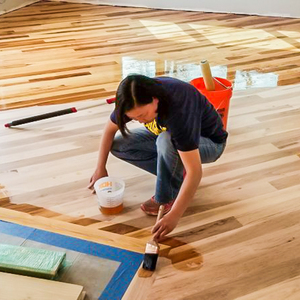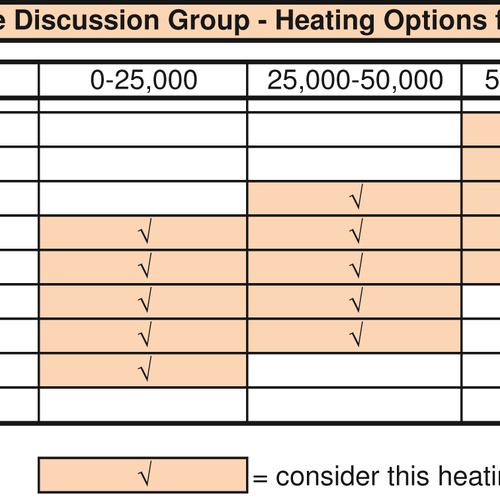
Insulating a new house used to be a no-brainer. It was that step between installing windows and hanging drywall, when the crew spent a few days stapling fiberglass batts between studs and joists. In no time it was out of sight and out of mind.
That was before blower-door tests, performance metrics like LEED and Passive House, and a better understanding of air and moisture movement in buildings. What once was an afterthought is now rife with opportunities to screw up.
The type of insulation, and how it is installed, dictates comfort, energy efficiency, and building durability. And unlike many building materials, this one often is buried in places that are difficult and expensive to revisit. Whoever lives in the house is going to be stuck with the insulation decision for a long time.
The choices aren’t unlimited, but it may seem that way. In addition to ever-popular fiberglass batts, there’s blown-in fiberglass, cellulose, spray polyurethane foam, rigid foam, fiberboard, and mineral wool. Most of those come in more than one variety, and that doesn’t count more exotic options, like denim, wool, mushrooms, and hemp.
Where do you start? That’s the question we posed to five builders and designers who work in a range of climate zones. While their houses are typically designed to exceed code minimums, few construction budgets are unlimited. Spending constraints often have much to do with what kind of insulation is used—especially in a competitive market. Builders often find themselves looking for insulation packages that are affordable as well as effective.
Minimums outlined in the International Residential Code (IRC) are a place to start, but model building codes only describe required R-values of various building assemblies. How builders get there is another question altogether. For R-values and other details on specific…
Weekly Newsletter
Get building science and energy efficiency advice, plus special offers, in your inbox.

This article is only available to GBA Prime Members
Sign up for a free trial and get instant access to this article as well as GBA’s complete library of premium articles and construction details.
Start Free TrialAlready a member? Log in















11 Comments
Great piece - thanks!
I agree, nice to see how real-world builders/designers approach this.
The arguments against not considering embodied carbon seems to be little more than an unwillingness to do so. I won't fault one for such, given they are trying to run a viable businesses and build buildings that work consistently and go together predictably. But as the conversation continues, hopefully it becomes common-place for production builders to consider.
The Maine based wood-fiber start up is worth keeping an eye on.
Hi Tyler.
I agree with you on the reluctance to consider embodied carbon expressed in the article. I have to wonder if it is inertia. For so long, builders focused on operational energy because we were taught that this is how we can make a difference with the work that we do. The news that embodied carbon may be more important to consider given the current understanding of climate issues is relatively new in the building industry at large. Hopefully it spreads and becomes an increasingly significant part of the conversation.
I have been exposed to this topic almost exponentially over the last two years. I have little doubt that there will be more consideration given to this topic as the explanation becomes simple and as the options become easier.
At the moment, if you want a highly insulated wall(r-40 plus) with a warm air barrier, you need either Larsen trusses or rigid exterior insulation.
Larsen trusses seem really labor intensive but can use sustainable insulation like cellulose. Rigid Mineral Wool and Polysterene works great but packs an embodied energy punch.
I agree with you Tyler, cost competitive wood fiber insulation will solve this puzzle. I too am excited about the GeoLab start up.
Rick,
Another alternative is double stud walls with the sheathing on the inner one.
Or not wary about how warm the sheathing is and use something that isn't susceptible to damage due to moisture accumulation like fibre-board or wood.
The spectrum of motives builders have for pursuing high performance envelopes is pretty wide, and includes many who aren't focused on carb0n emissions, either because they are primarily interested in efficiency as another aspect of building quality, or because they see a disconnect between the effect of their decisions and the scope of the problem.
I've got to admit it's a sometimes hard to build a certain way because "it's the right thing to do", when I don't see my actions as having any appreciable affect on what may be in store.
I was at JLC, and a presenter had a nice perspective. Just do one thing different. It's better than nothing, and I think it is psychologically realistic. #analysisparalysis
I find the "...concerns over what happens should cellulose get wet..." a bit odd. It's not as if the PNW has more moisture issues to worry about than New England, where heavy snowpack & ice dams on roofs are as common as cellulose insulation in walls & attics. The moisture buffering capacity of cellulose is generally PROTECTIVE of the structural sheathing & framing rather than a hazard to it.
Cellulose insulation products made from cardboard (eg CleanFiber/UltraCell), rather than newsprint are even better/cleaner/easier to deal with than the more traditional goods. Unlike R21 fiberglass, cellulose has a negative CO2e footprint. Maybe that could be "one thing different" to try out?
(FWIW: I have a few relatives currently living in Port Orchard, a town I visit every other summer or so.)
I have been waiting with bated breath for GO-Logic's fiberboard insulation to hit the market. MSL Fibre's SonoClimat ECO4 insulating fiberboard sheathing is made just over the border from New England in Quebec (and cheaper per R than Gutex imported from Europe), but essentially unavailable to the US market. Even if used solely for insulation rather than structural sheathing, a 1.5" layer of SonoClimat ECO4 gives a decent performance boost and protection to the structural wood. The high moisture tolerance and higher vapor permeance of fiberboard in most assemblies & climates a good thing, and like cellulose, it has a negative CO2e footprint. Hopefully GO-Logic's goods will be more available, and still reasonably priced. (SonoClimat ECO4 is fairly inexpensive compared to Gutex, and comes in more familiar 4' x 8' sheet sizing.)
https://www.mslfibre.com/Upload/Documentation/T12670-106_SONOclimat_ECO4_En_08-14637050076751289383.pdf
Rigid insulation is just too expensive in my opinion if you are building somewhere where it's really cold. I mean I'll be building north of Quebec city in the next year and I won't buy the sonoclima panels even though my local hardware store sells them. To reach an external R value of 20, I would need 5 layers. At 1 CAD/sqft for an R4, it's just too expensive and it would take forever to install. It would really make sense in a more moderate climate though or if you aim for code.
I prefer to use batts. 11'' 7/8 I joists are 30 $. I can use them as Larsen trusses and fill them with 2 layers of R22 rockwool batts which are only 0.80$/sqft. Then I can top it off with a highly permeable proclima or siga membrane for 1$/sqft. Pretty cheap for a high R value wall and the installation isn't that bad. Deep packed cellulose would work too but I would need an installer. Batts are just more practical because I can work at my own pace.
Personally, I really hope some NA company starts making wood fiber batts and loose insulation. Rockwool batts have a ton of embodied energy but I don't see any other practical options at the moment. Tried to buy some Steico products but it was expensive.
By the way, Gutex thermofiber doesn't seem that expensive because according to their numbers, you only need to reach a 2lb/cubft density to dense pack a wall. I just don't know if I can trust these specs though.
Fiberglass batts? I'm an owner rather than a builder but I've opened walls and ceilings for renovations in several 50-60 year old buildings and found the fiberglass batts completely compressed. And I've likewise seen what happens to them when they get wet. I also don't get foam on the exterior when it's apparently susceptible to insect damage.
I've been using Rockwool on both the interior and exterior of buildings. The contractor we used for the outside of a building we just renovated does a lot of siding work and had no trouble installing the furring level. It was Henry Blueskin over the existing sheathing followed by 1 1/4" Rockwool Comfortboard 80 (it was the only one we could get in less than 100 days or more), 1x3 furring strips and Hardieboard. And yes, it was expensive and I am bothered by the amount of carbon embodied in it. But as an owner of a tenant occupied 100 year old wood residential building, the fire resistant qualities of Rockwool provide a lot of comfort.
Log in or become a member to post a comment.
Sign up Log in